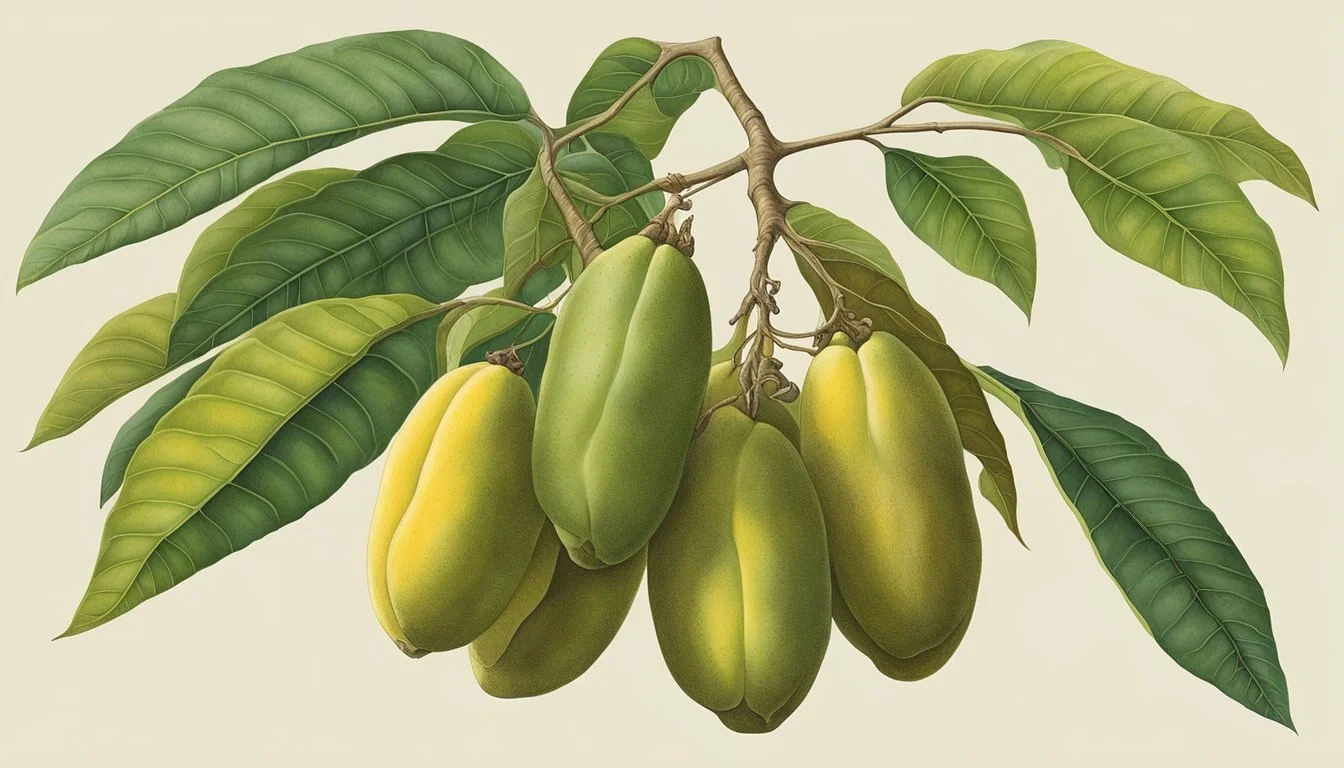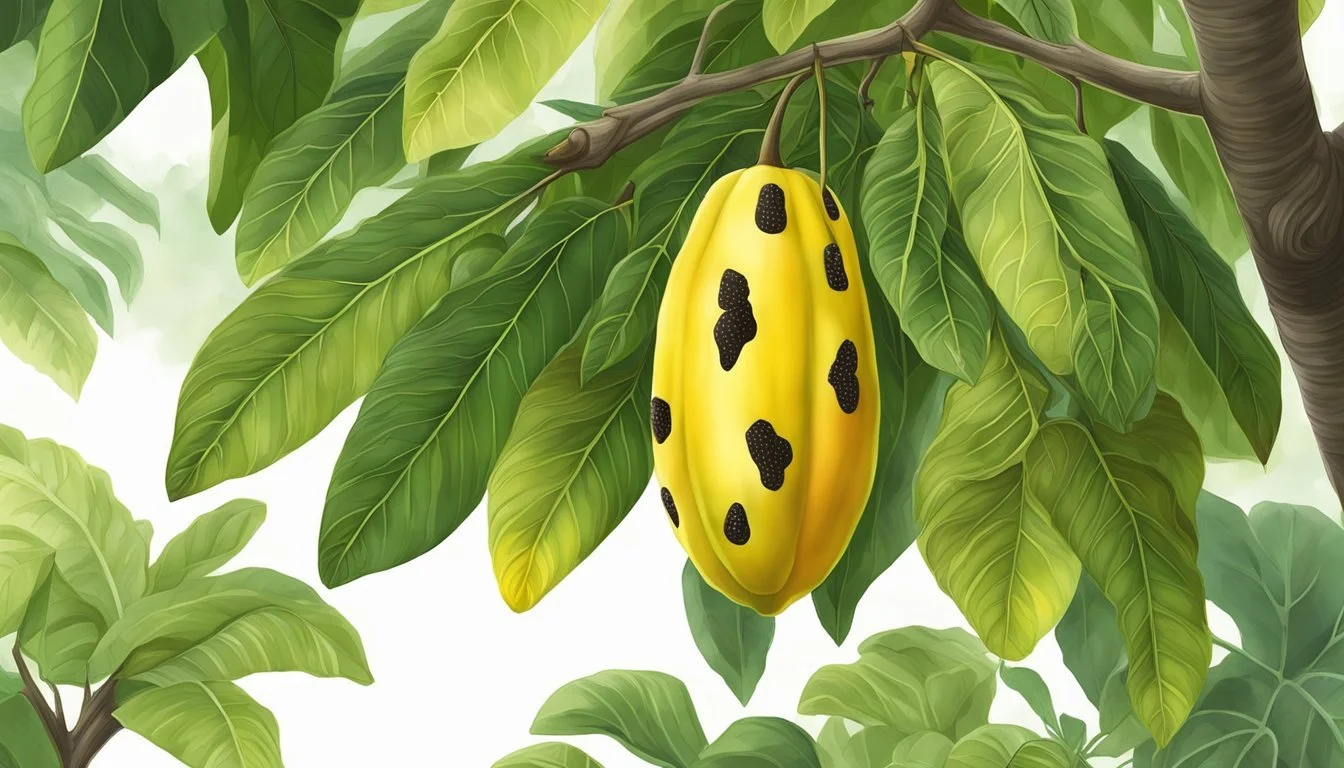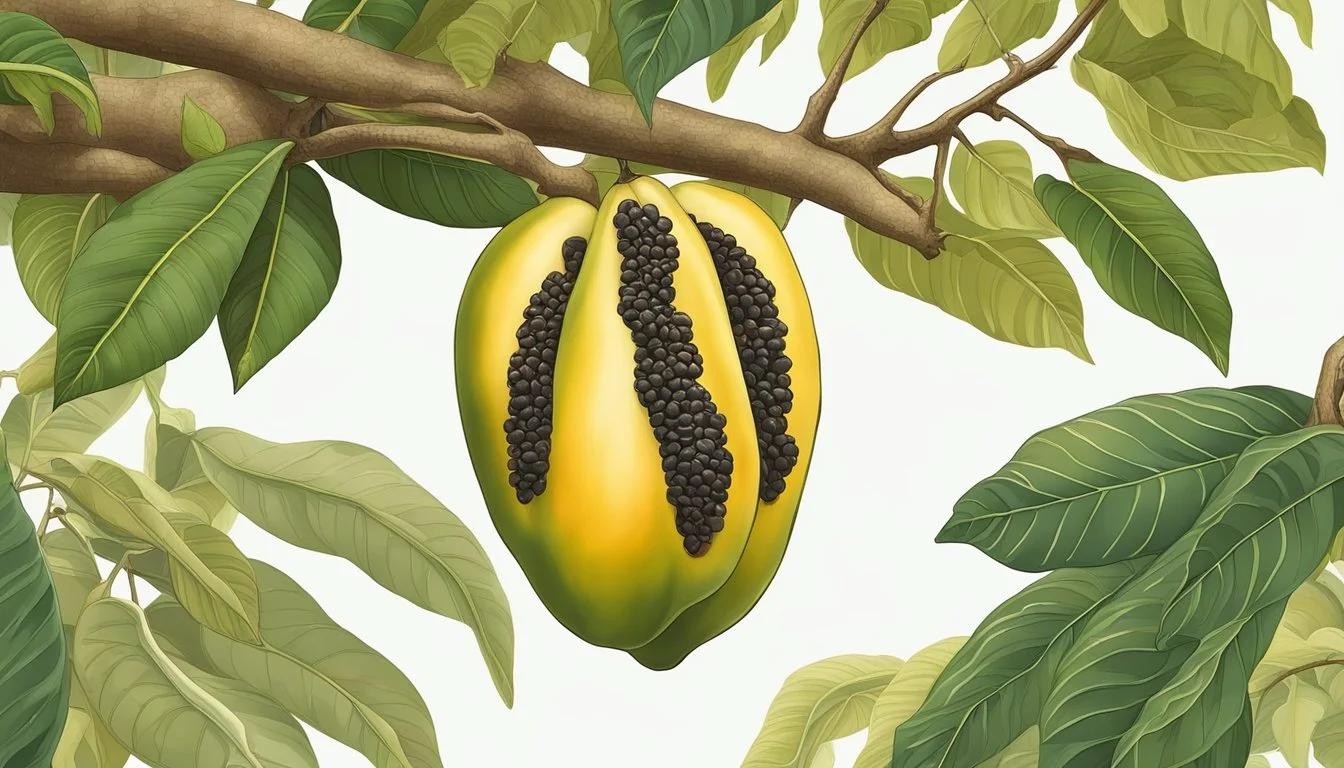How to Tell If a Pawpaw Is Ripe
Expert Tips for Selecting Sweet, Ready-to-Eat Fruit
Determining the ripeness of a pawpaw is key to enjoying its rich flavor and creamy texture to the fullest. Pawpaw fruit, often celebrated for its tropical taste reminiscent of banana and mango, can be tricky to harvest at the perfect time. To ensure maximum sweetness and optimal enjoyment, it is important to recognize the signs that a pawpaw is ready to be picked from the tree.
Knowing when a pawpaw has reached its peak ripeness involves a balance of visual cues, tactile assessments, and olfactory signals. The skin's color shift from green to yellowish-brown, a softer feel when gently squeezed, and a sweet, musky aroma are reliable indicators of maturity. Taking these signs into account can help prevent premature picking or missing out on the fruit's best quality due to over-ripening.
Key Takeaways
Identifying ripe pawpaw involves checking for color changes, softness, and a sweet aroma.
The right time to harvest pawpaw is when it yields slightly to pressure, similar to a ripe avocado.
Ripe pawpaws have a brief window of peak flavor before they overripen and begin to spoil.
Understanding Pawpaw Fruit Basics
Before delving into how to pick a ripe pawpaw, it's important to recognize the pawpaw tree and understand the fruit's distinctive traits.
Identifying a Pawpaw Tree
Pawpaw trees (Asimina triloba) are native to North America and can be identified by their unique characteristics. These deciduous trees often grow in clusters within rich, well-draining, and slightly acidic soil, usually alongside riverbanks and in floodplains. Pawpaw trees reach heights of about 15 to 30 feet and feature large, broad leaves that are 8 to 12 inches long. During early spring, the trees bear purple, six-petaled flowers, which by late summer or early fall, turn into the fruits for which the tree is known.
Leaves: Long and broad, ranging from 8 to 12 inches.
Flowers: Six-petaled and purple, appearing in early spring.
Height: Generally between 15 to 30 feet tall.
Habitat: Thrives in rich, well-drained soil; commonly found by riverbanks.
The Unique Characteristics of Pawpaws
Pawpaw fruits are the largest native fruits in North America and have a unique flavor profile often compared to a blend of banana, mango, and melon. Their shape is similar to a mango or a broad bean pod, and they usually grow from 3 to 6 inches in length. When ripe, the fruit's thin skin changes from green to a yellowish-brown and the flesh becomes custard-like and highly aromatic. Each pawpaw contains several large, dark brown seeds that should not be eaten.
Flavor: A mixture reminiscent of banana, mango, and melon.
Size: Typically 3 to 6 inches in length.
Skin: Thin, turning from green to yellowish-brown upon ripening.
Flesh: Soft, custard-like, and fragrant when ripe.
Seeds: Large, dark brown, and inedible.
It is these characteristics that make pawpaws a subject of interest for both culinary enthusiasts and foragers alike.
Optimal Conditions for Pawpaw Ripeness
Determining when a pawpaw fruit is ripe relies on recognizing the interplay between seasonal cues, environmental factors, and varietal characteristics. These elements collectively define the optimal conditions for pawpaw ripeness.
Seasonal Timing for Peak Ripeness
Pawpaw fruits typically reach peak ripeness from late summer to early fall. One should monitor the fruit as it transitions into these seasons. The period may span from midsummer through the first frost, which often serves as a natural deadline for harvesting.
Weather and Environmental Factors
The ripeness of pawpaw fruit is significantly influenced by weather conditions. Consistent warmth hastens the ripening process, while too much moisture can lead to premature spoilage. Ideal conditions include a balance of sunny days and moderate rainfall, enabling the fruit to develop its characteristic sweetness and soft texture.
Location Variance and Pawpaw Varieties
Different locations and pawpaw varieties will display variance in ripening times. A general rule is that pawpaws in more southern regions may ripen earlier due to warmer climate conditions. Additionally, the variety of the pawpaw tree affects when ripeness is achieved, with each cultivar having a slightly different time frame. It’s essential to research specific varieties and local climates to gauge the appropriate harvesting window.
Signs of Pawpaw Fruit Maturity
In determining the perfect time to harvest pawpaw fruit, one must observe specific changes in skin color, texture, scent, and softness. These cues are critical and will guide in identifying when the fruit has reached full maturity.
Assessing Skin Color and Texture Changes
When pawpaws approach maturity, their skin color transitions from green to a yellowish-green or brownish hue, depending on the variety. Look for black or brown spots, which often signal that the fruit is ripe. As for the texture, a ripe pawpaw's skin may show more visible blemishes and may start to appear slightly wrinkled.
Scent and Aroma Indicators
A ripe pawpaw emits a fragrant, sweet aroma, an unmistakeable sign of maturity. Growers should smell the fruit, detecting any strong scent indicating readiness for harvest. This aromatic cue is as important as the visual ones, as it hints at the inner sweetness achieved when the fruit is fully ripe.
Fruit Firmness Versus Softness
Firmness is a crucial tactile indicator; a mature pawpaw will yield to gentle pressure, much like a ripe avocado. One should note a distinct softness that wasn't present in the underripe stages. This slightly soft feel, when coupled with the above indicators, confidently points to a pawpaw that has reached its peak readiness for enjoyment.
Harvesting Your Ripe Pawpaw
Key steps involve selecting the right time for harvesting pawpaw fruit, employing the correct method to pick them, and following essential post-harvest storage guidelines to maintain the quality and flavor of the fruits.
The Correct Way to Pick Pawpaws
When picking pawpaws, one should approach the task with care to avoid bruising the delicate fruit. Gentle handling is paramount. They should grasp the fruit and twist it lightly; if the pawpaw separates easily from the tree, it is ready to be harvested. It is important not to pull the fruit forcefully, as this can damage both the fruit and the tree. Instead, support the base of the pawpaw and allow the natural abscission process to occur, where the fruit detaches from the stem on its own with minimal effort.
Harvest Time: Recognizing the Perfect Moment
Peak ripeness of pawpaws is determined by several clear indicators. A ripe pawpaw will have a yielding feel when gently squeezed, akin to that of a ripe peach. The skin color shifts from a bright green to a yellowish or brownish hue, often accompanied by dark spots. Observing these changes in color and texture can signal the right time for harvesting pawpaw fruit. Additionally, a sweet, aromatic scent is a telltale sign of ripe pawpaws ready for picking in the backyard orchard.
Color: Transforms from green to yellow-green or brown.
Feel: Slightly soft when squeezed gently.
Aroma: Emits a sweet, tropical fragrance.
Post-Harvest Handling and Storage Tips
Once harvested, immediate proper storage is crucial to maintain the integrity of the pawpaws. They should be kept at room temperature if they are to be consumed within 2-3 days. For longer storage, placing the fruit in the refrigerator is advised; this can extend the pawpaw's edible state for up to a week. Fruits that are not consumed promptly can be prepped for freezing by removing the skin and seeds, and storing them in airtight containers or freezer bags. This method will keep the pawpaw suitable for consumption for several months. It is vital to handle the fruits with care during post-harvest processing to prevent bruising and ensure the best taste experience from the pawpaw.
Preparing Ripe Pawpaw for Consumption
When a pawpaw has reached the perfect level of ripeness, it's ready to be enjoyed. The focus here is on how to properly cut and serve this fruit, incorporate its creamy pulp into delightful recipes, and apply preservation techniques to extend its enjoyment.
How to Properly Cut and Serve Pawpaw Fruit
A ripe pawpaw should be treated with care to preserve its delicate, custard-like texture and tropical flavor. To begin, one should place the fruit on a stable surface and use a sharp knife to make a lengthwise incision. Then, using both hands, they can twist the fruit open to reveal the pulp. The seeds should be disregarded, and the fruit can be served in slices or scooped out with a spoon into a bowl, ready to enjoy.
Utilizing Pawpaw in Recipes
Pawpaw's sweet, mango-meets-banana flavor profile makes it a versatile ingredient for a variety of recipes. They can transform the ripe pawpaw pulp into a smooth, creamy base for desserts like pawpaw ice cream by blending it with cream, sugar, and then churning in an ice cream maker. It can also be an excellent addition to smoothies or substituted in recipes that call for mango or avocado.
Preservation Techniques for Pawpaw
To preserve pawpaw for later use, one might consider freezing the pulp. It should be puréed and mixed with a sprinkle of sugar to retain its sweetness before being placed in the freezer. Alternatively, leaving the fruit at room temperature allows it to ripen further, and then it can be stored in a refrigerator for a short term. For immediate consumption, ripe pawpaw fruit is best enjoyed at room temperature for its full flavor profile.
Advanced Tips for Perfectly Sweet Fruit
Achieving the sweetest pawpaws requires strategic horticultural practices focusing on soil health, timely pruning, and disease management.
Fertilization and Soil Considerations
For optimal flavor, pawpaws prefer soil rich in organic matter with adequate drainage. Applying a balanced fertilizer ensures the pawpaw trees receive essential nutrients for fruit development. It is critical to maintain a soil pH between 5.5 and 7.0, which can be managed by regular testing and amendment with lime or sulfur as needed.
Nutrient Requirements: A balanced N-P-K (Nitrogen-Phosphorus-Potassium) ratio
Soil pH: Ideal range is 5.5 to 7.0
Organic Matter: Increases moisture retention and nutrient availability
Pruning Practices for Maximum Yield
Pruning is vital for ensuring sunlight reaches all parts of the pawpaw tree, which is essential for fruit ripening and sweetness. One should selectively remove competing leaders and thin out branches to promote air circulation. Thinning flowers in early spring can lead to larger, sweeter fruit as it enables the tree to focus its energy.
Sunlight Exposure: Thin branches to allow sunlight penetration
Air Circulation: Prune to prevent disease and promote drying of foliage
Energy Focus: Remove excess flowers to enhance fruit size and sweetness
Identifying and Preventing Common Issues
Pawpaw trees can face issues like pests or diseases which hinder the ripening process and affect fruit quality. One should be vigilant for any signs of pests like the pawpaw peduncle borer and diseases such as fungal infections. Use cultural and, if necessary, chemical methods responsibly to maintain tree health and fruit sweetness.
Common Pests: Keep an eye out for pawpaw peduncle borer
Disease Resistance: Select cultivars like 'Shenandoah' or 'Susquehanna' for their resistance profiles
Proactive Management: Monitor for early signs of issues and act promptly to prevent escalation
Nutritional Benefits and Health Considerations
When selecting a ripe pawpaw, one not only anticipates a sweet and enjoyable treat but also access to numerous health benefits due to its nutritional content.
Vitamins, Minerals, and Antioxidants in Pawpaw
Pawpaw fruit is a considerable source of essential nutrients. Vitamin C is a standout, promoting immune system function and skin health, while magnesium, manganese, and iron are minerals crucial for metabolic processes and maintaining healthy bones.
Vitamins: High levels of vitamin C and also contains riboflavin (vitamin B2)
Minerals: Rich in magnesium, manganese, iron, potassium, and calcium
Antioxidants: Presence of phytochemicals such as acetogenins
These attributes are especially pronounced in ripe pawpaws, which have developed their full spectrum of vitamins and antioxidants.
Pawpaw Consumption and Dietary Impact
Incorporating ripe pawpaw into one's diet could have a positive impact on health, through both macro and micronutrients.
Dietary Fiber: Aids in digestion and can promote a feeling of fullness
Caloric Content: Offers a moderate amount of calories, primarily from carbohydrates
The fiber and water content in ripe pawpaws can contribute to hydration and satiety, which might be beneficial for those managing their dietary intake. However, as with all fruits, it is important to consider the sugar content within a balanced and varied diet.
Selection and Purchase of Pawpaws
Selecting and purchasing ripe pawpaws is a matter of knowing the right time and place, as well as being able to identify quality fruit indicators. Expertise in these areas will lead to the enjoyment of the unique flavor akin to a blend of banana and peach.
Where to Find Ripe Pawpaws
Ripe pawpaws are primarily found from midsummer through the early fall, largely depending on the region. In locations like Albany, Ohio, pawpaw trees thrive in well-drained, fertile soils. Farmers' markets or specialty stores in these areas are often the best places to find fresh pawpaw fruit. Pawpaws do not store well for long periods, so local markets are preferable to ensure the fruit's freshness and optimal taste.
Farmers' Markets: Check local market listings during pawpaw season.
Specialty Food Stores: These outlets may stock pawpaws when in season, especially in regions where the tree is native.
Quality Indicators for Purchasing
When purchasing pawpaws, select fruit with a rich green color that has begun to soften, as this indicates ripeness. The feel of the pawpaw is critical – a ripe pawpaw will yield slightly to gentle pressure. A fruity aroma is another key indicator. The skin should be mostly blemish-free; however, minor bruising can be common due to the fruit's delicate nature.
Color: Look for a deep green hue that may be starting to yellow slightly.
Touch: Gently squeeze; ripe pawpaws should give slightly but not be overly mushy.
Fruity Aroma: A ripe pawpaw emits a strong, sweet scent.
Appearance: Opt for pawpaws without significant blemishes or signs of over-ripeness.
As pawpaws are delicate and bruise easily, handle them with care during selection and transport to maintain their quality.






